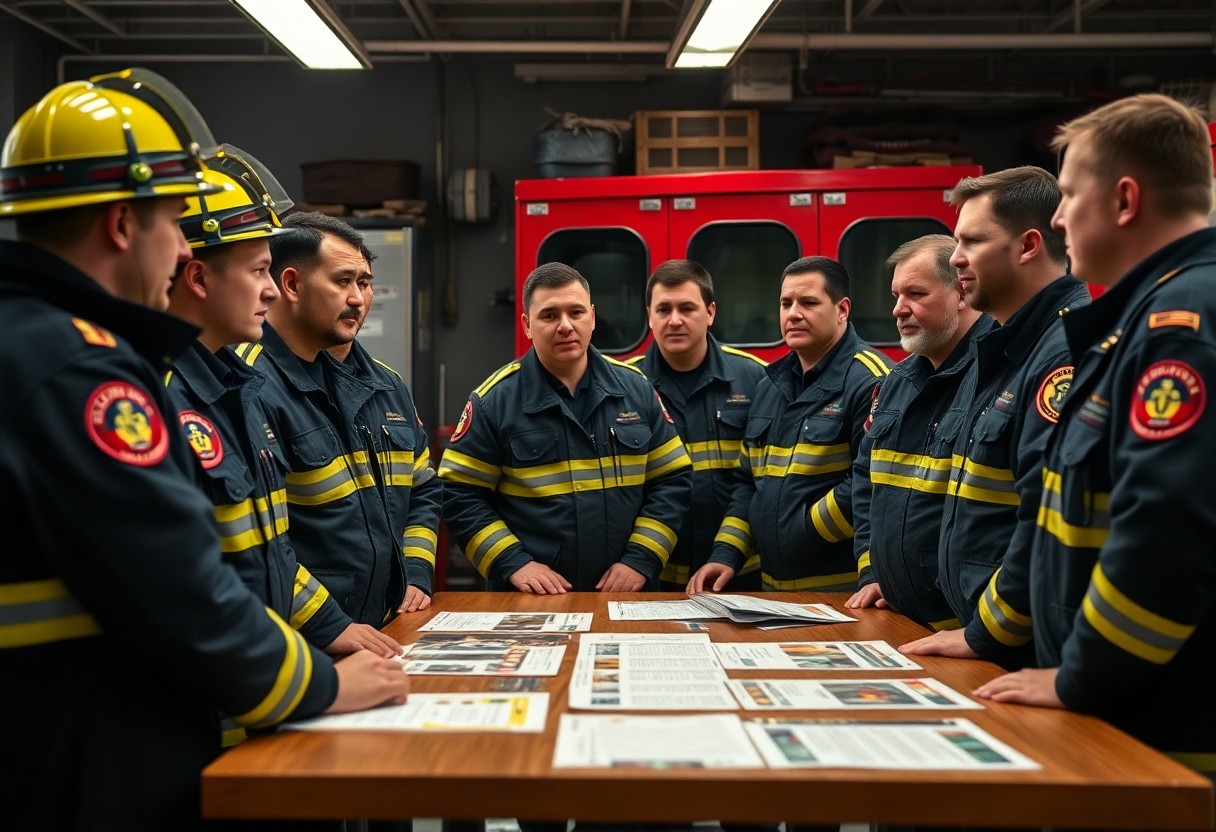Over the years, volunteer fire departments have faced challenges in attracting and retaining new members. Establishing a dedicated recruitment task force can effectively address this issue by creating targeted strategies to engage potential volunteers in your community. This focused group can enhance your department’s outreach efforts, foster relationships with local organizations, and implement innovative approaches to showcase the value of joining your team. By prioritizing recruitment, you can ensure the long-term sustainability of your fire department and maintain the important services you provide to your community.
Importance of a Recruitment Task Force
The formation of a recruitment task force within your volunteer fire department is vital to cultivating a strong and dedicated team. This focused approach enables you to strategically identify, engage, and attract new members, ensuring that your department remains robust and resilient in meeting community needs.
Benefits of Increased Membership
Any increase in membership not only enhances your department’s capabilities but also fosters a sense of community and support. By bringing in fresh recruits, you’ll benefit from diverse skills and perspectives, leading to improved teamwork and shared responsibilities during emergencies.
Addressing Staffing Challenges
Membership is fundamental to overcoming staffing challenges that many volunteer fire departments face. When you have a sufficient number of active members, you can better manage shifts and maintain readiness, ultimately ensuring that your community receives timely and effective emergency response.
And as your recruitment task force proactively addresses staffing shortages, you’ll find that a steady influx of new members can alleviate burnout among existing volunteers. This can lead to more efficient training programs, increased motivation for all personnel, and a healthier work-life balance, allowing your department to operate smoothly and sustain high morale.
Strategies for Attracting New Members
There’s a wide array of strategies you can implement to attract new members to your volunteer fire department. By focusing on community engagement, you create opportunities for potential recruits to experience the value and camaraderie of your team. Additionally, using social media and online platforms allows you to reach younger demographics who are often more connected online, ensuring your message hits the right audience. Every effort counts in building a strong, diverse team that can continue to serve your community effectively.
Community Engagement Initiatives
Among the most effective ways to attract new members is through community engagement initiatives. Hosting open houses, fire safety demonstrations, and educational workshops allows you to showcase the department’s valuable contributions to the community. By actively participating in local events, you create opportunities for people to interact with your team and learn more about volunteer firefighting, making it more appealing for them to join.
Leveraging Social Media and Online Platforms
About 80% of people today use social media, which makes it an effective tool for recruitment. Leveraging platforms like Facebook, Instagram, and Twitter allows you to share your department’s mission, successes, and personal stories. Regular posts and engaging content can create a sense of community and attract interest from potential volunteers who resonate with your values and activities.
Another approach to enhancing your online presence is by utilizing targeted advertising on social media. This way, you can reach specific demographics based on factors like age, location, and interests, ensuring your message connects with those most likely to join. Showcasing testimonials from current members can add a personal touch, allowing potential recruits to visualize themselves as part of your team. Encourage followers to share your content, thus expanding your reach organically and inviting others to learn about your department.
Developing a Comprehensive Recruitment Plan
If your volunteer fire department is serious about attracting new members, developing a comprehensive recruitment plan is important. This plan should encompass strategies to reach potential candidates, outline the department’s value proposition, and establish a timeline for your recruitment efforts. By taking a structured approach, you can ensure your recruitment initiatives are targeted and effective, ultimately leading to a more robust volunteer force.
Identifying Target Audiences
Around your community, there are diverse groups of individuals who may be interested in joining your volunteer fire department. Consider targeting young adults, local sports teams, community organizations, and schools. By understanding who your ideal candidates are, you can tailor your outreach methods and messaging to resonate with those who are most likely to join your ranks.
Setting Clear Goals and Metrics
An effective recruitment plan requires you to set clear goals and metrics to measure your progress. These goals might include the number of recruits you aim to attract within a specific timeframe or specific demographics you want to target. Establishing metrics such as application rates, conversion rates, and engagement rates can help you assess the success of your strategies and make necessary adjustments.
Plus, having defined goals helps keep your recruitment efforts focused and provides a benchmark for accountability. By tracking your metrics regularly, you’ll gain insights into what’s working and what isn’t, enabling you to refine your strategies and optimize your outreach. This ongoing evaluation not only enhances your recruitment effectiveness but also fosters a culture of improvement within your department.
Collaboration with Local Organizations
Unlike traditional recruitment methods, forming partnerships with local organizations can significantly enhance your volunteer fire department’s ability to attract new members. By collaborating with community centers, businesses, and health organizations, you can leverage their networks and resources to promote your recruitment efforts. Engaging with these entities not only raises awareness about your department but also creates mutually beneficial relationships that can support your goals and foster a sense of community involvement.
Partnerships with Schools and Colleges
The presence of a recruitment task force can open doors to partnerships with local schools and colleges, providing an vital pipeline of potential members. By organizing educational workshops and mentorship programs, you can introduce students to the fulfilling experiences of volunteer firefighting, encouraging them to consider joining your department upon graduation.
Engagement with Community Groups
Engagement with community groups can strengthen your recruitment efforts by fostering deeper connections within the community. By attending local events and participating in group activities, you create opportunities to showcase your department’s values, demonstrate teamwork, and build a positive reputation. Your active involvement will not only position your department as a supportive presence in the community but also attract individuals who resonate with your mission.
Organizations within your community often seek volunteers to help with their own events and initiatives. By collaborating on projects, hosting joint workshops, or engaging in community service activities, you not only support these groups but also showcase the camaraderie and teamwork inherently present in the fire department. This collaboration can effectively illustrate the rewarding experiences of being part of a team committed to making a difference, ultimately encouraging more people to consider volunteering with your fire department.
Training and Retention of New Members
Many volunteer fire departments face challenges in training and retaining new members. It is important to establish comprehensive training programs that equip individuals with the necessary skills and knowledge to serve effectively. Creating a culture of mentorship and ongoing support will not only enhance the performance of new recruits but will also make them feel valued and engaged in their role within the department.
Orientation Programs
Among the first steps to achieving effective integration of new recruits is implementing a structured orientation program. This program should provide an overview of the department’s mission, values, and operational procedures, ensuring that new members feel informed and welcome from their first day.
Creating a Supportive Environment
Members of your fire department thrive in an environment that fosters camaraderie and support. By actively encouraging open communication and teamwork, you will help new recruits establish meaningful connections with veteran members. This camaraderie not only enhances their sense of belonging but also motivates them to stay engaged and contribute positively to the team.
Further, when you cultivate this supportive environment, it’s important to celebrate achievements, both big and small. Recognizing the hard work of your members can reinforce their commitment to the department. Establishing mentorship programs where seasoned firefighters guide newcomers can significantly enhance their confidence and skills. This approach not only helps in retention, but it also builds a strong sense of community, which is important for a successful volunteer fire department.
Monitoring and Evaluating Recruitment Efforts
Despite your best efforts, it’s important to continuously monitor and evaluate your recruitment initiatives. By tracking your progress, you can identify which strategies are effective and which may need adjustment. Regular assessments ensure that your task force remains focused and responsive to the evolving needs of your department and community, ultimately leading to a more successful recruitment process.
Assessing Recruitment Success
Monitoring your recruitment success involves collecting and analyzing data regarding candidate applications, retention rates, and community engagement. By reviewing these metrics periodically, you can understand how your efforts align with your recruitment goals. This process also enables you to gauge the effectiveness of your outreach strategies and make informed decisions moving forward.
Adjusting Strategies Based on Feedback
Adjusting your recruitment strategies based on feedback helps your task force remain agile and focused on attracting new members. Engaging with current volunteers, potential recruits, and the community will provide insights on what is working and what isn’t. This feedback loop serves to enhance your methods, making them more targeted and effective in reaching your recruitment objectives.
But incorporating feedback is not just about making minor tweaks; it’s an opportunity to overhaul your strategies if necessary. You should actively seek input from volunteers and participants in recruitment events, asking for their perspectives on what attracted them or what barriers they encountered. Analyzing this feedback can uncover hidden challenges and provide fresh ideas to revitalize your approach, ensuring you connect with potential recruits and ultimately grow your department successfully.
Summing up
Hence, by creating a dedicated recruitment task force within your volunteer fire department, you can significantly enhance your efforts to attract new members. This focused approach allows you to identify specific goals, develop targeted outreach strategies, and engage with your community more effectively. By involving current members in the recruitment process, you not only foster a sense of ownership but also showcase the rewarding experience of volunteering. Your proactive measures can lead to a stronger, more resilient department that is better prepared to serve the community.



